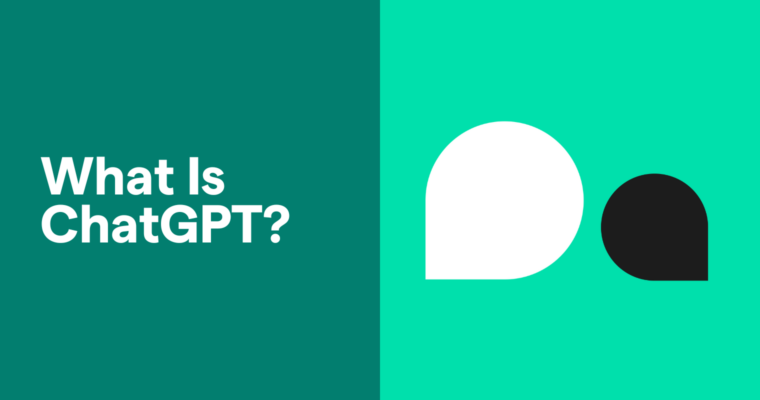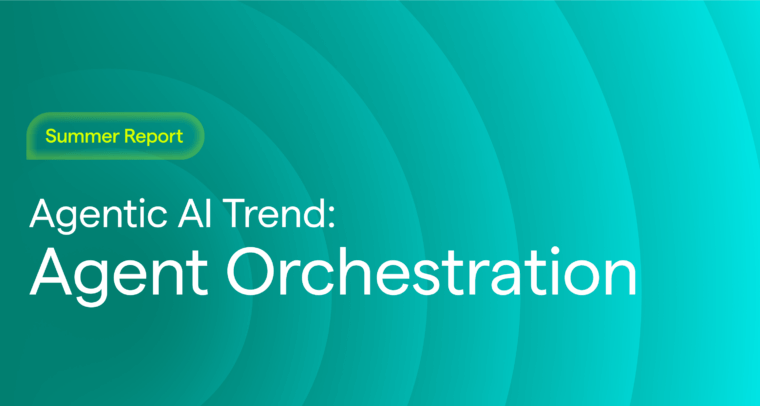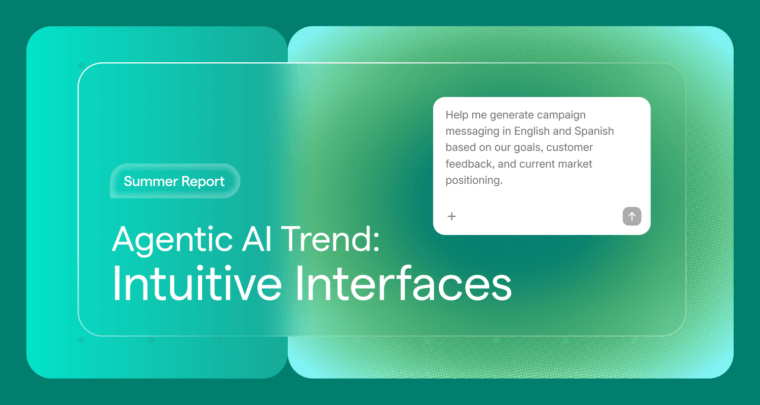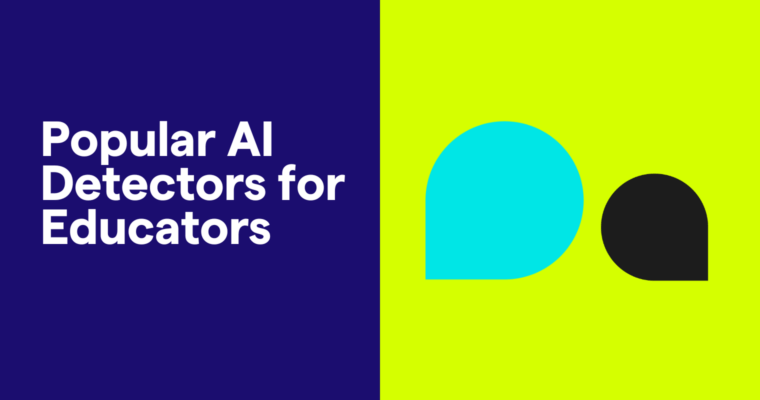
Since its launch in late 2022, ChatGPT has become a household name. This comprehensive guide will teach you everything you need to know about ChatGPT: what it is, how it works, what you can accomplish with it, and the pitfalls to watch out for.
Table of contents
- What is ChatGPT?
- How ChatGPT works
- Who created ChatGPT?
- Is ChatGPT free?
- How to use ChatGPT
- Advantages of ChatGPT
- Limitations of ChatGPT
- Conclusion
What is ChatGPT?
ChatGPT is an artificial intelligence chatbot. It uses natural language processing (NLP) to generate text content in various formats, such as code or prose. It’s designed to engage with you conversationally. You can ask it a question or make a request, and ChatGPT will generate a humanlike response.
What does ChatGPT stand for?
GPT stands for generative pre-trained transformer. It refers to the family of large language models (LLMs) developed by OpenAI, the creator of ChatGPT.
Let’s break down what GPT means:
- Generative: The purpose of the model is to generate original content.
- Pre-trained: It was trained to recognize patterns in a large dataset before being fine-tuned to perform specific tasks.
- Transformer: The model relies on a highly advanced machine learning architecture called a transformer. What sets transformers apart is their ability to understand context and process much larger datasets than other types of machine learning frameworks.
ChatGPT is a GPT-based application geared toward conversations, which is why it begins with the word chat.
ChatGPT vs. GPT-4
ChatGPT is often confused with GPT-4. Both are developed by the same company, OpenAI, and both serve as the foundation on which various applications can run.
GPT-4 is the latest version of OpenAI’s LLM. ChatGPT is a chatbot application built on GPT-3, the predecessor to GPT-4. It now runs on GPT-3.5. You can, however, gain access to GPT-4 with the paid version of ChatGPT.
How ChatGPT works
ChatGPT uses algorithms to predict the right responses to your conversational inputs. Those algorithms are backed by highly sophisticated mathematical concepts and vast computing power. To understand the mechanisms behind ChatGPT’s predictions, you need to understand how the model it was based on, GPT-3, works.
Understanding GPT-3, the model ChatGPT was based on
GPT-3 was pre-trained on a massive dataset of publicly available online information. Instead of being fed prompts and responses (which would limit its capabilities), it was trained to independently interpret the data it consumed, with just a few ground rules to guide it. This approach is called unsupervised pre-training. During this stage, the model learned to identify patterns and understand the relationships and rules of the texts it consumed.
Here’s where the T in GPT comes in. To understand how transformers work, you can compare them to how we use context clues to help us understand the meaning of a new word or differentiate between homonyms. We focus on certain words to interpret what we’re reading.
Let’s say you’re reading an article with a line that says “All of the buggies in the grocery store had squeaky wheels.” If you don’t know what a “buggy” is, you can use context clues to figure it out. Our brains are capable of homing in on the words grocery store and wheels, which indicate that a buggy is most likely a shopping cart.
Furthermore, we can do this in a nonlinear fashion. We can identify those important words regardless of whether they come before or after one another. We can also understand that the order of words in a sentence may impact its meaning.
With the GPT model, the transformer performs those processes. It applies values to words and their relationships to one another in a way that computers can understand. As the model learns, the number of these computer-readable values, called parameters, increases. A higher number of parameters is generally associated with more capabilities.
With a large dataset of information to draw from and a transformer capable of putting that information in context, GPT-3 can make predictions based on probabilities. Each time you enter a prompt, it uses algorithms to predict the appropriate response, one word at a time.
How ChatGPT was fine-tuned for conversation
ChatGPT is based on GPT-3, but it was fine-tuned separately. The fine-tuning process focused on optimizing ChatGPT for dialogue. OpenAI used a technique called reinforcement learning from human feedback (RLHF) to fine-tune the model and ensure it could generate responses that people actually want.
During the process, many people read prompts and rated ChatGPT’s responses. The model was then trained to seek more positive ratings with each response. This fine-tuning process helped ChatGPT learn to deliver higher-quality answers and also helped root out biased and harmful responses.
OpenAI also used a targeted dataset to fine-tune ChatGPT. This dataset consisted of 160,000 human dialogues made specifically for training conversational AI. OpenAI also used several existing datasets, such as the Cornell Movie-Dialogs Corpus, an extensive collection of conversations from movie scripts.
Who created ChatGPT?
ChatGPT was created by OpenAI, a San Francisco–based artificial intelligence research firm. OpenAI was founded in 2015 by a diverse group of tech leaders, scientists, and researchers, including Sam Altman (current OpenAI CEO), Elon Musk (founder and CEO of Tesla and SpaceX), and Reid Hoffman (co-founder of LinkedIn).
OpenAI began developing its first generative AI model in 2018 and released ChatGPT to the public in November 2022. Its viral success was a surprise to the OpenAI team. The company had already released versions of its GPT models for developers. In early 2022, it also released a platform called InstructGPT, which is similar to ChatGPT but is meant for more specific applications.
Is ChatGPT free?
ChatGPT is available for free. You can also purchase a paid subscription, which is offered in tiers.
Additional features in the paid subscription include:
- Access to ChatGPT during peak times, when it may be down for free users
- Early access to new features
- The ability to interact with ChatGPT using images and voice in addition to text
- Access to the latest model, GPT-4
- Access to other OpenAI tools, such as DALL-E (an image generator) and advanced data analysis capabilities
How to access ChatGPT
ChatGPT is accessible via the web and apps for Android and iOS.
How to use ChatGPT
Although it’s referred to as a chatbot, ChatGPT has far-reaching applications. Teachers, coders, writers, data analysts, artists, and anyone who uses text can incorporate it into their tasks.
Text generation
ChatGPT can write a wide range of content, from emails to movie scripts. You can use ChatGPT for various aspects of the writing process, including outlining, creating first drafts, and getting feedback for revisions.
Popular personal writing activities include:
- Essays
- Cover letters
- Social media profiles
- Personal biographies
- Letters to government officials, banks, and utility companies
- Recipes
In professional settings, ChatGPT is often used for the following:
- Marketing content and communications
- Memos
- Product descriptions
- Process documentation
- Syllabi and instructional content
- Job descriptions
It’s also capable of generating creative content such as:
- Fiction
- Poetry
- Scripts
- Jokes
ChatGPT’s writing capabilities are impressive. However, there are many alternatives. Grammarly, for example, adapts to your writing style and works inside the applications you already use, such as email and Google Docs.
Coding
ChatGPT can write code in most programming languages. It doesn’t necessarily create entire programs, but you can use it to make coding more efficient in many ways:
- Generating snippets of code for specific tasks
- Translating from one programming language into another
- Identifying bugs and providing fixes
- Producing high-level documentation
- Optimizing existing code
Because ChatGPT translates natural language into code, it’s become a popular way for beginners to start coding.
Custom chatbots
You can use ChatGPT to create custom chatbots. Anyone with a premium subscription can create one by telling ChatGPT what they want the chatbot, or GPT, to do. You can also provide the GPT with access to additional knowledge.
These custom GPTs have a wide range of uses. For example, you can create a chatbot that teaches you how to play chess, or a business can use a tailored GPT for customer service functions. OpenAI offers a marketplace where you can discover GPTs or make yours available to other users.
Summarizing text
If you copy a text into ChatGPT, you can prompt it to generate a summary of the key points. You can also specify how you want ChatGPT to provide the summary. For example, to summarize a long technical document, you might request that ChatGPT create an overview that a layperson could understand.
Research
ChatGPT’s vast knowledge base makes it a popular tool for researching topics of all kinds. You can ask ChatGPT for answers to miscellaneous questions that you would typically put into a search engine, such as “What are some popular line dances?” or “Where do monarch butterflies migrate?”
ChatGPT can also help you dive deeper into topics for a variety of purposes:
- Exploring new industries or career paths
- Learning the steps of a process
- Learning about new cultures, notable figures, and major events
Idea generation
ChatGPT can help jump-start the brainstorming process by generating ideas for you. It can list ideas for things like content, products, or events. You can also enter a list of ideas into ChatGPT and ask it to improve or adapt them. For instance, you can provide a list of rainy-day activities and ask ChatGPT to refine the list to activities geared toward kids under ten years old.
Planning
ChatGPT can help you plan your next meeting, vacation, or monthly to-do list. Write a prompt describing what you would like to plan, and ChatGPT can help:
- Plan a family outing with recommended attractions and activities
- Create a packing list for a trip
- Create a meeting agenda and provide a list of questions to send meeting attendees in advance
- Create a weekly cleaning checklist
Advanced data analysis
With a paid ChatGPT account, you can access advanced data analysis capabilities. You can upload files of various formats, including CSV files and MP3s, and ask ChatGPT to perform tasks with the data.
Let’s say you want to analyze raw sales data. You can upload your file and ask ChatGPT to tell you which days of the week have the highest sales. ChatGPT can also create visualizations of the data, such as a graph showing sales volume by day of the week. You can even get specific and request a line graph or a bar chart.
Advantages of ChatGPT
ChatGPT offers many advantages due to its natural language processing abilities, the vast knowledge base it was trained on, and its ability to produce nearly any type of text-based content.
Efficiency
ChatGPT can perform time-consuming, repetitive tasks, particularly those you don’t want to do. Coders, small-business owners, and even legal professionals use ChatGPT to perform manual tasks. That frees them up to work on more complex activities, like planning business strategy or collaborating with colleagues.
Customization
You can customize ChatGPT so it always produces responses that suit your preferences. For instance, if you are asking for trip recommendations, you can tell ChatGPT things like the number of people you typically travel with or that you need accommodations for people with disabilities. ChatGPT will remember those preferences and incorporate them in responses moving forward.
Multilingual
ChatGPT understands and generates content in dozens of languages. You can enter your prompt in one language and ask ChatGPT to respond in another. The multilingual capabilities also make ChatGPT a powerful tool for translation.
Plugins
ChatGPT offers a growing number of plugins that allow you to interact with other websites and third-party services within the application. For instance, you can ask for shopping recommendations and get a list with direct links to items that match your prompt.
Limitations of ChatGPT
Despite its advantages, ChatGPT has some limitations that everyone should be aware of. Knowing these limitations allows you to use this tool to its fullest potential while avoiding pitfalls like inaccuracies and frustrating, unhelpful responses.
Hallucinations
ChatGPT can generate false or incorrect responses, which are known as hallucinations. Hallucinations are presented as facts, so they can be difficult to catch. This is a byproduct of AI programming. Remember, ChatGPT doesn’t know things. It predicts the next word in a sentence. Sometimes, those predictions are incorrect.
Hallucinations are a major problem for developers who want to use AI for critical services like healthcare. For now, the average person needs to be aware that hallucinations happen and not unquestioningly trust the content that ChatGPT generates.
Need for well-thought-out prompting
ChatGPT was built to generate content on a broad range of topics for a wide variety of people, so its responses can sometimes be generic. In most cases, you’ll need to be very prescriptive with prompting to get the responses that you want.
For instance, if you prompt ChatGPT to write a subject line for an email with no additional instructions, the responses may read like they were created by a computer, rather than by you. If you want the subject line written in a specific tone or voice, or to focus on a particular issue, you’ll need to write highly descriptive prompts. Figuring out the right prompts can be time-consuming. Also, once you’ve settled on the right prompt, there’s no guarantee that you’ll get the same results every time you use it.
Limited knowledge
ChatGPT was trained on information up to 2021, so it can’t provide responses about current events or real-time information. If you ask it to describe the images sent from the James Webb Space Telescope, which were first transmitted in 2022, it will tell you that it doesn’t have access to that information. If you’re using it to plan an event like a vacation, you’ll want to verify that the attractions it suggests are still open.
Lack of citations
ChatGPT can be useful for research, but it doesn’t provide citations for the information it produces. If you ask it to provide citations, it may create fake or incorrect ones. For that reason, it’s important to be careful when using ChatGPT for research. You’ll need to do extra legwork if you’re using it for tasks where citations and accuracy are essential, like academic or legal writing.
Exploring ChatGPT and beyond
With its highly sophisticated algorithms, ChatGPT generates humanlike content in nearly every setting, whether software development or academics. It can save you time, help you communicate better, and introduce you to new ideas, all while being fun to play with. You can take full advantage of these capabilities by knowing ChatGPT’s downsides and working around them. Navigate responsible AI use with Grammarly’s AI checker, trained to identify AI-generated text.
While ChatGPT is the most well-known generative AI tool, it certainly isn’t the only one. If you’re interested in using AI for work, school, or personal tasks, explore the many options available. As the models evolve and more use cases are developed, staying up to date will allow you to identify the right AI tools and make them work for you.






